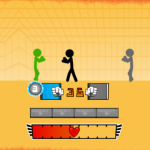Chess is a popular board game that has been played for centuries. It requires strategy, patience, and skill to master. This article will provide an introduction to the game of chess, including the rules, pieces, and basic strategy.

Chess is a two-player game that is played on a square board consisting of 64 squares, with alternating light and dark squares. Each player starts with 16 pieces: one king, one queen, two rooks, two knights, two bishops, and eight pawns. The objective of the game is to checkmate the opponent’s king, which means putting it into a position where it is in danger of being captured (in check), and there is no legal move to get out of check.
The pieces move in different ways. The king can move one square in any direction, the queen can move in any direction along a straight line, the rook can move horizontally or vertically, the bishop can move diagonally, and the knight moves in an L-shape pattern. Pawns can only move forward one square at a time, but they have the unique ability to capture an opponent’s piece diagonally.
Players take turns moving their pieces, and each piece can only move to an unoccupied square. If a piece lands on a square occupied by an opponent’s piece, the opponent’s piece is captured and removed from the board.
Players can also castle, which is a move that involves moving the king two squares towards a rook, and then moving the rook to the square over which the king passed. Castling is a useful move for getting the king out of danger and developing the rook.
Another important concept in chess is en passant, which allows a pawn to capture an opponent’s pawn that has just moved two squares forward from its starting position. This can only be done on the next move, and only if the pawn being captured would have been able to be captured had it only moved one square forward.

The game of chess can be played at many different levels, from casual play to competitive tournaments. To become a better player, it is important to study and practice different strategies and tactics, such as controlling the center of the board, developing your pieces, and creating threats to your opponent’s pieces.





